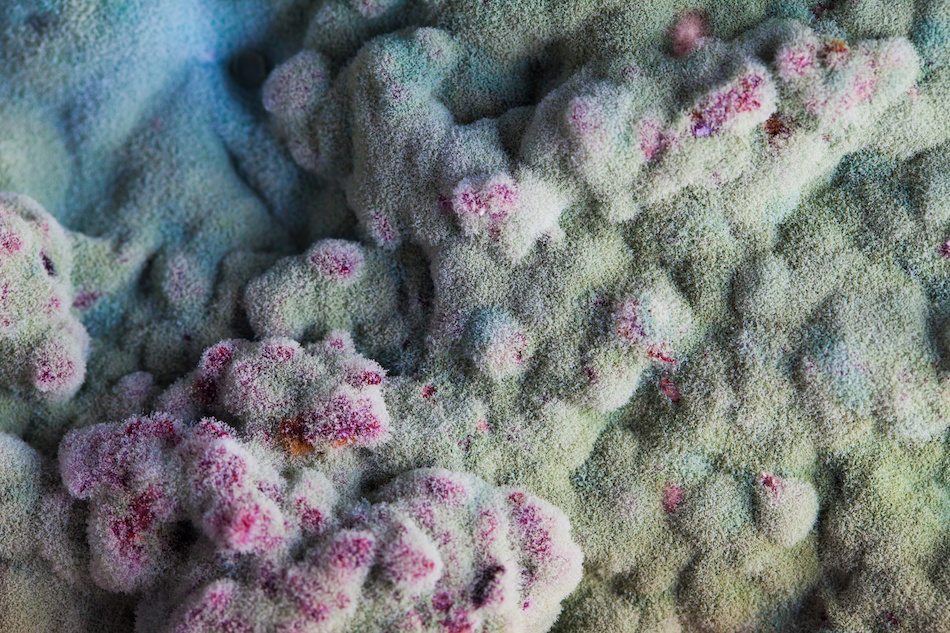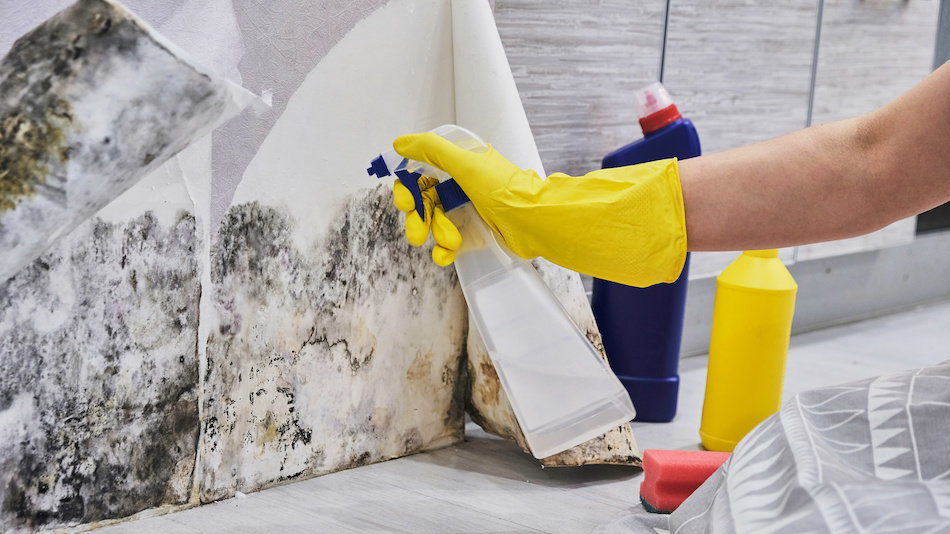How to Eliminate Mould from Your Home
Posted by EdmontonRealEstate .ca on Wednesday, November 21st, 2018 at 12:22pm.
 Mould in the home environment is a growing concern for homeowners across the country. In addition to being a serious health hazard for the occupants of the home, the presence of mould can reduce or eliminate prospective buyer interest and be both difficult and expensive for homeowners to deal with.
Mould in the home environment is a growing concern for homeowners across the country. In addition to being a serious health hazard for the occupants of the home, the presence of mould can reduce or eliminate prospective buyer interest and be both difficult and expensive for homeowners to deal with.
Identifying the Cause of the Mould
Knowing the type of mould is pivotal to understanding the potential hazards, as some species are more destructive than others. Homeowners can either buy a DIY testing kit or contact a professional to identify the samples. Ultimately, the homeowner needs to know where the mould came from, so they have an opportunity to eliminate the problem at its source. In many cases, it's as easy as replacing a leaking appliance. However, there may be larger factors at play in the case of more toxic mould.
Thousands Of Species Of Mould Exist Throughout The Environment
Mould issues in the home are nothing new, although many of the health concerns that surround it are just now becoming known. Mould is a fungus that can flourish anywhere that spores have access to moisture, oxygen and a food source, such as cellulose.
Potential Health Risks Associated With Mould Exposure
While there are literally thousands of different types of mould, ranging from harmless, to allergenic, to toxic, Stachybotrys chartarum, sometimes known as Stachybotrys atra, is an example of a relatively common mould type known to be capable of causing potentially serious health risks.
While mould-related illnesses can affect anyone, infants, children, and elderly persons may be more seriously affected. In addition, people who are already dealing with a respiratory condition or allergies are also at higher risk, as are those who have a compromised immune system from another illness or condition.
Continuous exposure to mould has been found to cause serious health risks, including cancer, neurotoxicity, pulmonary issues, endocrine and renal issues, and problems with pregnancy, as well as many others.
Common Home Surfaces Supply Food For Mould Growth
Although mould spores are present throughout the environment, be it in Southwest Edmonton or elsewhere, conditions in a home or structure often allow the mould to grow out of control. This is because the average home offers many cellulose-rich surfaces capable of feeding the mould, such as drywall, wood, plywood, construction glue, particle board, ceiling tiles, and wood or wood-composite cabinetry and trim. If a moisture or humidity issue develops inside the home, mould growth will result in these areas and spread quickly.
Moisture Allows Mould To Flourish In The Home
A leaky pipe or toilet, an unrepaired roof leak, poor ventilation in bathrooms, and moisture left behind from flooding are just a few of the ways in which mould spores are able to get the moisture they need to flourish and become an infestation. Since many of the leaks and moisture issues that develop in homes and other structures are located in areas that are not easily visible, such as basements, attics, and within walls, they can go unnoticed for long periods of time. By the time the leak or moisture issue has seeped into a living area and been discovered by the occupants, a sizable mould problem may have already become well-established.
DIY Mould Cleanup Information
Homeowners who discover a mould problem within their home or in another structure on their property should carefully consider the following factors when assessing the problem and deciding on the best method of handling it. These factors are:
- The type surface on which the mould is growing
- The level of mould growth (heavy or light)
- The approximate size of the affected area
If the mould is growing on non-porous surface that can be easily cleaned and sanitized, such as tile or painted wood, homeowners may be able to handle the removal themselves. A solution of household bleach and water can remove visible mould from some surfaces. After scrubbing, these surfaces must be dried completely and any moisture issues corrected to prevent a recurrence of mould growth.
However, if the mould is growing on a porous surface or there is a large infestation, the surface will likely need to removed and replaced. This is especially true when mould is growing on drywall, ceiling tiles, carpets, or other surfaces capable of absorbing moisture that will be allow mould to regrow easily.
Isolate The Mould in its Location
 Mould pollutes the air and can make people ill if they're exposed to it for too long. Even if everyone in the home feels fine, they should be kept away from the infestation to protect their lungs. If the mould is causing residents any breathing problems or cold-like symptoms, the first step is to take them to a doctor. Homeowners should isolate a swab of the mould to take to the doctor to make it easier for them to determine the variety of mould and the best ways to treat it.
Mould pollutes the air and can make people ill if they're exposed to it for too long. Even if everyone in the home feels fine, they should be kept away from the infestation to protect their lungs. If the mould is causing residents any breathing problems or cold-like symptoms, the first step is to take them to a doctor. Homeowners should isolate a swab of the mould to take to the doctor to make it easier for them to determine the variety of mould and the best ways to treat it.
Homeowners who have a small mould problem and want to try a DIY approach should remember the cleaning process will disturb mould spores that can cause health risks. When working in an area where mould is present, homeowners should always wear appropriate face masks, eye protection, gloves, and should take care to cover exposed skin.
Additionally, it is a good idea to turn off any HVAC units while doing the clean up, to prevent mould spores from being drawn into the heating and cooling system of the home. Once the mould has been completely removed, homeowners should change out furnace filters and vacuum HVAC vents and living areas thoroughly to remove as many mould spores as possible.
Proper Handling Of Serious Mould Problems
Mould infestations that are large, hard to access, or will require significant remodeling to address should be handled by a mould removal specialist. This type of situation is common after homes have had flood damage, had a plumbing or sewer pipe break, or other issues that allowed flooring, walls, or ceilings to become saturated.
Disclosing Past Mould Problems To Buyers
Homeowners who plan on selling their home should always opt to disclose any serious issues, including mould. When presented in a factual way, along with documented proof of what steps were taken to address the problem, this type of information is not likely to cause issues with selling the home.
When sellers do not disclose past mould problems, evidence of it may still arise during the buyer inspection phase or if a buyer decides to cheque readily available public records, such as building permits.
Proactive Measures to Prevent Mould
Those who would like to safely tackle mould removal on their own will need to ensure they have appropriate ventilation during the process. This may mean purchasing full-body protection to prevent potential exposure. The best thing a homeowner can do though is to take proactive maintenance steps for their home. Fixing the flashing on the roof immediately or replacing a damaged piece of siding can go a long way to safeguarding the home from moisture.
Submitting an Insurance Claim for Mould Remediation
Some cases of mould aren't covered by insurance, but mould that stems from a covered peril is a legitimate claim. For example, if a bathroom pipe was damaged by a storm, the homeowner may receive full or partial payment for the damages. In these cases, it's especially necessary to hire the right professional for the job. Look for companies who have excellent reviews and who allow third-party retesting after they've finished to ensure all mould is gold.
Finding Professional Help to Eliminate Mould
Experts generally recommend hiring a professional to eliminate mould in a home, simply because it's dangerous for homeowners to work in an enclosed space where they may breathe in harmful spores. It's also easy to miss mould because it can hide in practically any layer of the home. For example, if the mould is coming from a leaky pipe, a homeowner could easily miss the spreading patch that's coming from inside the walls.
Mould comes in a variety of shapes and forms, so it's important for homeowners to understand its characteristics before forming a plan. While it's a possibility to take care of small cases of mould on one's own, it's usually necessary to have a professional assess the situation. This way, a homeowner has the potential to identify where the mould is coming from and to confirm if it's managed to infiltrate other places in the home.

